Papers by Zenilda Batista
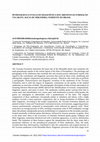
Estudos geológicos, Sep 26, 2022
The Tacaratu Formation represents the basal unit of the Mirandiba Basin and constitutes the main ... more The Tacaratu Formation represents the basal unit of the Mirandiba Basin and constitutes the main groundwater aquifer in the central region of the State of Pernambuco. The petrology and petrography of the sandstones that constitute this unit remains poorly understood, mainly with regard to the constituents and diagenetic processes that acted on these rocks, modifying and altering their original composition and primary porosity. Therefore, this work aims to perform a petrographic characterization and diagenetic evolution of the sandstones of the Tacaratu Formation, and to infer the impact of diagenetic constituents on the quality of the studied sandstones as reservoirs of fluids. The petrographic description of thin sections and analysis in Scanning Electron Microscope (SEM) allowed the identifications of textural, compositional, diagenetic aspects, and types of pores. The sandstones exhibits grains varying from fine to coarse sand, and subordinately very coarse sand, with moderately to poorly sorted grains; the grains are subangular to subrounded, with a predominance of the latter. The original composition of these sandstones corresponds mainly to subarkose and arkose, with a slight tendency towards a more quartzose composition, due to strong dissolution of feldspars and lithic fragments. According to the modal compositions, the Tacaratu Formation deposits are plotted in Inner Craton and Transitional Continental tectonic environments, suggesting primary sources predominantly composed of metamorphic rocks followed by igneous rocks. These rocks have an average porosity of 20%, reaching a maximum value of 30% (arithmetic average data); the primary intergranular porosity predominates in comparison to the secondary porosity, formed essentially of detrital grains dissolution, followed by fracture porosity on grains. Next to the shear zone, there is the occurrence of intensely fractured quartz grains, feldspars and lithic fragments, sometimes dissolved and with a mylonite appearance, as well as, deformation bands. The formation of these features support the interpretation that the shear zones had a paramount influence on the petrophysical properties of these sandstones. Thus, the study revealed that these deformations contributed to alter the composition and original porosity of the Tacaratu sandstones of the Mirandiba Basin. Diagenetic processes of the three stages were
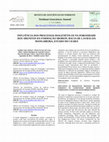
Revista de Geociências do Nordeste, Nov 12, 2021
The study of diagenetic processes is essential to evaluate the potential of sandstones as good re... more The study of diagenetic processes is essential to evaluate the potential of sandstones as good reservoirs of oil, gas, and water. Nonetheless, the diagenesis of the Iborepi Formation sandstones (Lavras da Mangabeira Basin) is little known, mainly regarding its effect on the original porosity of these rocks, which can be studied as analogs of oil basin reservoirs. Aiming to evaluate the diagenetic process that affected the Iborepi sandstones, as well as their potential for fluid storage, nine thin sections were analyzed. The study revealed that the processes that most affected the primary porosity of these rocks and their quality as reservoirs include compaction, cementation, and clay infiltration, with compaction prevailing. These processes have damaged the porosity and permeability of these rocks by reducing pore space and clogging pore throats. The detritic composition has also affected the original porosity, favoring some diagenetic processes. Although these rocks have a reasonable porosity for
Elaborado por Maurício Amormino Júnior-CRB6/2422 O conteúdo dos artigos e seus dados em sua forma... more Elaborado por Maurício Amormino Júnior-CRB6/2422 O conteúdo dos artigos e seus dados em sua forma, correção e confiabilidade são de responsabilidade exclusiva dos autores. 2019 Permitido o download da obra e o compartilhamento desde que sejam atribuídos créditos aos autores, mas sem a possibilidade de alterá-la de nenhuma forma ou utilizá-la para fins comerciais.
Journal of South American Earth Sciences, Nov 1, 2022
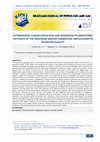
Brazilian Journal of Petroleum and Gas, Jun 25, 2021
The acquisition of geological data is of fundamental importance for the study of areas potentiall... more The acquisition of geological data is of fundamental importance for the study of areas potentially relevant to the occurrence of petroleum systems. In this context, the development of research in outcropping rock formations has proven to be a potential method to investigate the geology of the geological unit studied in subsurface. One of several examples found in Brazil are the outcrops Barreiras do Boqueirão and Praia de Japaratinga, belonging to the Maceió Formation, located in the northern coast of Alagoas State. The Maceió Formation has the lowest cretaceous sedimentation record within the Alagoas Basin. This sedimentation, present almost in the entire basin, is located mainly in its subsurface. This geological unit is composed of several lithologies, including a turbiditic sequence predominantly formed by shales, sandstones and conglomerates. This environment makes it possible the occurrence of a petroleum system. Our research group chose to investigate this environment because turbiditic sandstones are excellent petroleum reservoirs, and they have a great economic relevance in the Brazilian petroleum scenario. To develop this research, a petrographic characterization of the Maceió Formation sandstones was conducted to help determine the compositional and diagenetic aspects of these rocks and infer the influence of diagenetic processes on the quality of these sandstones as reservoirs. The petrographic analysis showed that the studied sandstones can be classified as arkose and quartzenite, present moderate porosity and good permeability, observed through the predominant presence of floating contacts between the grains. The porosity is predominantly primary intergranular, averaging 15%, but secondary porosity by fracture and dissolution of primary grains also occurs. The sandstones of the Maceió Formation are poorly and moderately selected, with angular, sub-angular and sub-rounded grains, showing low to medium textural maturity, which may also influence the quality of the reservoir, impairing the primary porosity in the samples. The three diagenetic stages were identified as: eodiagenesis, mesodiagenesis, and telodiagenesis. The diagenetic processes found were: mechanical compaction, beginning of chemical compaction, clay infiltration, pyrite cementation, grain dissolution, chlorite cementation, quartz sintaxial growth, and mineral alteration and replacement. Mineral replacement was a phenomenon observed quite expressively in the samples analyzed. This event was evidenced, particularly, by the substitution of muscovite and feldspar for kaolinite, the alteration of biotite was also identified in the samples. Therefore, one can infer that the diagenetic processes had little influence on the reduction of the original porosity in the samples studied. In general, considering all the analyses performed in this research, one can see that the sandstones of the Maceió Formation (northern portion) present a good reservoir quality.
Journal of South American Earth Sciences
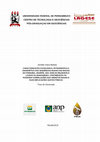
This thesis analyzes the basinal sequences from the Parnaiba, Sao Jose do Belmonte and Lavras da ... more This thesis analyzes the basinal sequences from the Parnaiba, Sao Jose do Belmonte and Lavras da Mangabeira basins, which are represented by the formations Ipu, Jaicos, Cariri, Tacaratu and Iborepi, that are composed of siliciclastic rocks, mostly sandy and conglomeratic. The focus of this thesis was compare and correlate those rocks. The approach used was based on facies data, petrologic, petrographic, semi qualitative and quantitative geochemistry signature, provenance data and heavy metals. Were identified seven facies and ten lithofacies at Ipu Formation; six facies and six lithofacies at Jaicos Formation, twelve facies and twelve lithofacies at Cariri Formation; three facies and five lithofacies at Tacaratu Formation; two facies and three lithofacies at Iborepi Formation. The depositional systems were interpreted as alluvial fans, braided rivers and glacial. The petrographic and diagenetic analyzes allowed the textural and mineralogical characterization of the sandstone, identi...
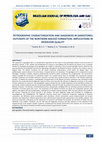
Brazilian Journal of Petroleum and Gas, 2021
The acquisition of geological data is of fundamental importance for the study of areas potentiall... more The acquisition of geological data is of fundamental importance for the study of areas potentially relevant to the occurrence of petroleum systems. In this context, the development of research in outcropping rock formations has proven to be a potential method to investigate the geology of the geological unit studied in subsurface. One of several examples found in Brazil are the outcrops Barreiras do Boqueirão and Praia de Japaratinga, belonging to the Maceió Formation, located in the northern coast of Alagoas State. The Maceió Formation has the lowest cretaceous sedimentation record within the Alagoas Basin. This sedimentation, present almost in the entire basin, is located mainly in its subsurface. This geological unit is composed of several lithologies, including a turbiditic sequence predominantly formed by shales, sandstones and conglomerates. This environment makes it possible the occurrence of a petroleum system. Our research group chose to investigate this environment because...
Engenharias, ciência e tecnologia 5, 2019
Engenharias, ciência e tecnologia 4, 2019
Elaborado por Maurício Amormino Júnior-CRB6/2422 O conteúdo dos artigos e seus dados em sua forma... more Elaborado por Maurício Amormino Júnior-CRB6/2422 O conteúdo dos artigos e seus dados em sua forma, correção e confiabilidade são de responsabilidade exclusiva dos autores. 2019 Permitido o download da obra e o compartilhamento desde que sejam atribuídos créditos aos autores, mas sem a possibilidade de alterá-la de nenhuma forma ou utilizá-la para fins comerciais.
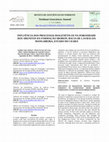
Revista de Geociências do Nordeste, 2021
Análises de processos diagenéticos que atuaram sobre os arenitos da Formação Iborepi foram realiz... more Análises de processos diagenéticos que atuaram sobre os arenitos da Formação Iborepi foram realizadas em amostras de rochas da Bacia Lavras da Mangabeira. A petrologia e a diagênese desses arenitos é pouco conhecida, principalmente quanto aos processos diagenéticos que atuaram sobre a porosidade original dessas rochas, que podem ser estudadas como análogos de reservatórios de bacias petrolíferas. Estudos petrológico e petrográfico foram realizados em nove lâminas, a fim de avaliar os processos diagenéticos que impactaram a porosidade original dos arenitos Iborepi. Os processos encontrados foram: argila infiltrada como cutículas envolvendo grãos e agregados microcristalinos intersticiais; compactação mecânica e química gerando fraturas em grãos, pseudomatriz em litoclastos dúcteis, micas dobradas e dissolução de grãos originando contatos côncavo-convexos e suturados; precipitação de crescimentos secundários (overgrowths) e projeções de quartzo (outgrowths), caulinita, esmectita e clo...



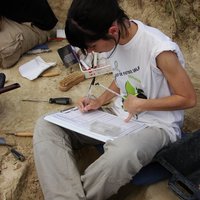






Uploads
Papers by Zenilda Batista